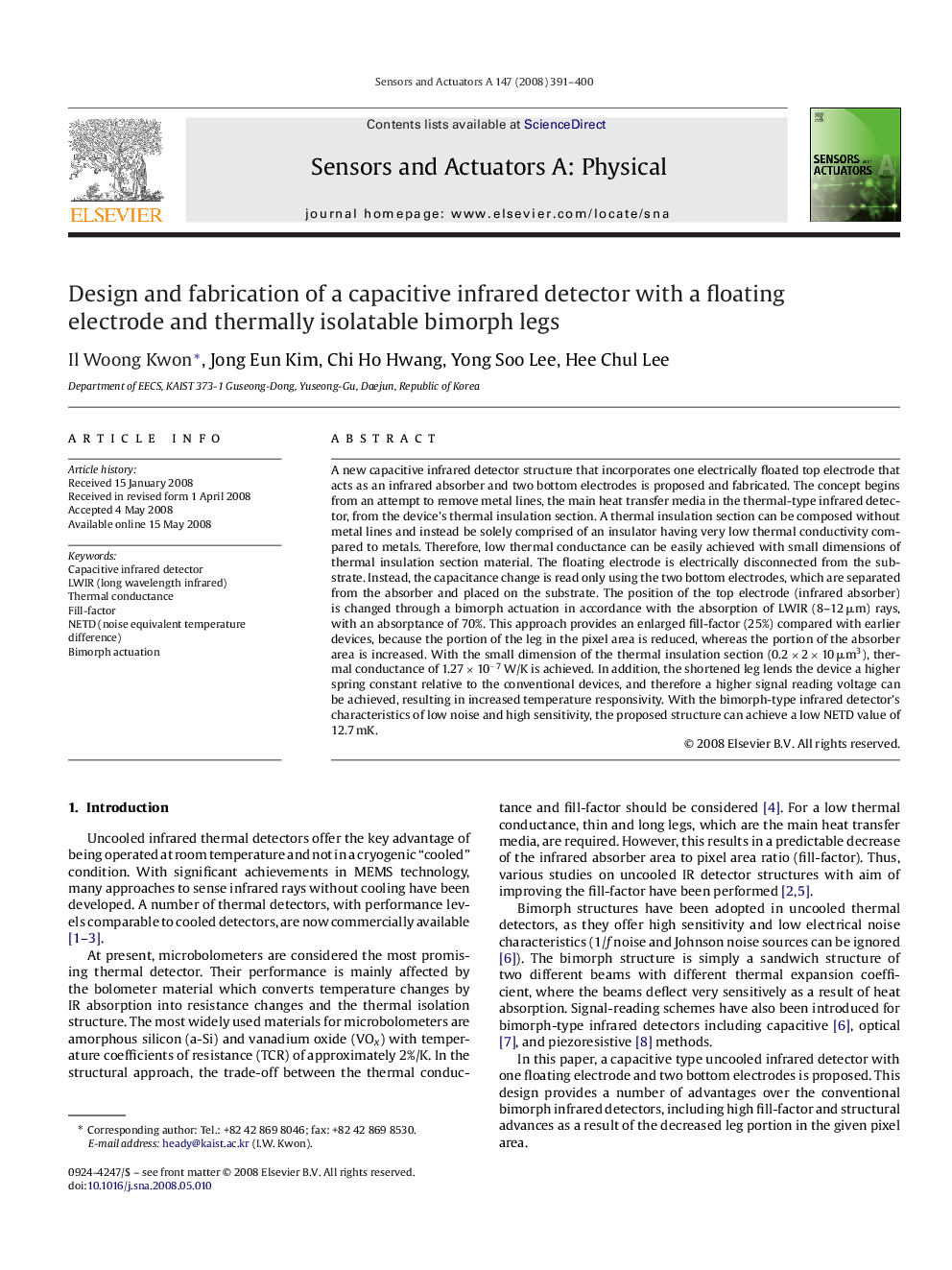| Article ID | Journal | Published Year | Pages | File Type |
|---|---|---|---|---|
| 737149 | Sensors and Actuators A: Physical | 2008 | 10 Pages |
Abstract
A new capacitive infrared detector structure that incorporates one electrically floated top electrode that acts as an infrared absorber and two bottom electrodes is proposed and fabricated. The concept begins from an attempt to remove metal lines, the main heat transfer media in the thermal-type infrared detector, from the device's thermal insulation section. A thermal insulation section can be composed without metal lines and instead be solely comprised of an insulator having very low thermal conductivity compared to metals. Therefore, low thermal conductance can be easily achieved with small dimensions of thermal insulation section material. The floating electrode is electrically disconnected from the substrate. Instead, the capacitance change is read only using the two bottom electrodes, which are separated from the absorber and placed on the substrate. The position of the top electrode (infrared absorber) is changed through a bimorph actuation in accordance with the absorption of LWIR (8-12 μm) rays, with an absorptance of 70%. This approach provides an enlarged fill-factor (25%) compared with earlier devices, because the portion of the leg in the pixel area is reduced, whereas the portion of the absorber area is increased. With the small dimension of the thermal insulation section (0.2 Ã 2 Ã 10 μm3), thermal conductance of 1.27 Ã 10â7 W/K is achieved. In addition, the shortened leg lends the device a higher spring constant relative to the conventional devices, and therefore a higher signal reading voltage can be achieved, resulting in increased temperature responsivity. With the bimorph-type infrared detector's characteristics of low noise and high sensitivity, the proposed structure can achieve a low NETD value of 12.7 mK.
Keywords
Related Topics
Physical Sciences and Engineering
Chemistry
Electrochemistry
Authors
Il Woong Kwon, Jong Eun Kim, Chi Ho Hwang, Yong Soo Lee, Hee Chul Lee,
